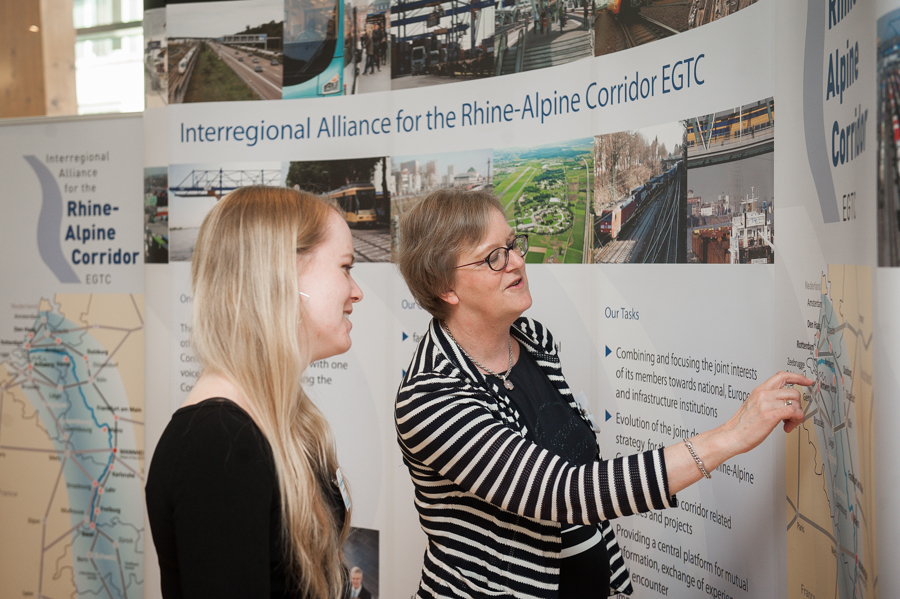 Share this!
Share this!On 7 June 2018, on the occasion of the Interregional Alliance for the Rhine-Alpine Corridor EGTC conference, AER Secretary General Mathieu Mori presented the experience of AER member regions which are part of a European Grouping of Territorial Cooperation (EGTC). AER aims to strengthen the cooperation with the European Corridors to help regions cooperate more along territorial axes which matter for them and engage regions across corridors.
Facilitating cooperation along European corridors
The main objective of the Rhine-Alpine Corridor EGTC is to facilitate territorial cooperation among its members and promote integrated development of the multimodal from the regional and local perspective. The EGTC is a legal framework that helps public entities of different Member States to work together and develop projects under a new entity with full legal personality.
The conference has been the occasion to underline the importance of a joint and coordinated development of an European Corridor.
Case studies from AER members
At the workshop about “Experience with the EGTC as a legal Form” AER Secretariat Mathieu Mori spoke about AER’s members within EGTCs and illustrated four case studies:
- Central European Transport Corridor EGTC, a Baltic-Adriatic transport corridor;
- Euroregio Tyrol-South Tyrol-Trentino, a cooperation between Tyrol, South Tyrol and Trentino in different projects;
- Euroregio Senza Confini, an association between Veneto (IT), Friuli-Venezia Giulia (IT) and Karnten (AT);
- EGTC Alzette-Belval, brings together the regions of Grand Est (FR), Region Wallonie (BE), Luxemburg and the german regions of Rheinland-Pfalz and Saarland (DE).
He gave an overview of their objectives, fields of actions, their expectations for the future and presented the experiences of each with a look at the common points in order to see if the Interregional alliance for the Rhine-Alpine Corridor is a good example of interregional cooperation and if EGTC is a good tool for cross-border cooperation. The conclusion shared by Mathieu Mori showed that in all the case studies EGTC is considered as a useful tool for cooperation and it has facilitated the dialogue between different institutions, being a neutral place of cooperation and a stable partner.
It is possible to see the presentation and find synthesised the main outputs presented at the conference (presentation here).
Together in one corridor
The Interregional Alliance for the Rhine-Alpine Corridor EGTC has been established three years ago. This alliance gather 21 members from cities, regions and ports along the corridor.
The EGTC acts as an interface, as an intermediate entity facilitating consultation and dialogue between the different levels of government and between the various stakeholders from public and private scope. One of the purposes is to influence positively the sustainable development of the EU territory through the creation of one shared strategy between corridors.
Follow Up
- Communication is now established between AER and the EGTC Platform coordinated by the Committee of the Regions
- The Working Group on Transport and Mobility will discuss the collaboration with the Rhine Alpine corridor and other corridors at the AER Autumn Committee Plenary in Vojvodina.
This will be an opportunity to plan the development of cooperations between and alongside European Corridors
Useful Links
Interactive map of European Transport and Mobility corridors
Photo credits: Rhine-Alpine Corridor EGTC
